
Feel free to add tags, names, dates or anything you are looking for
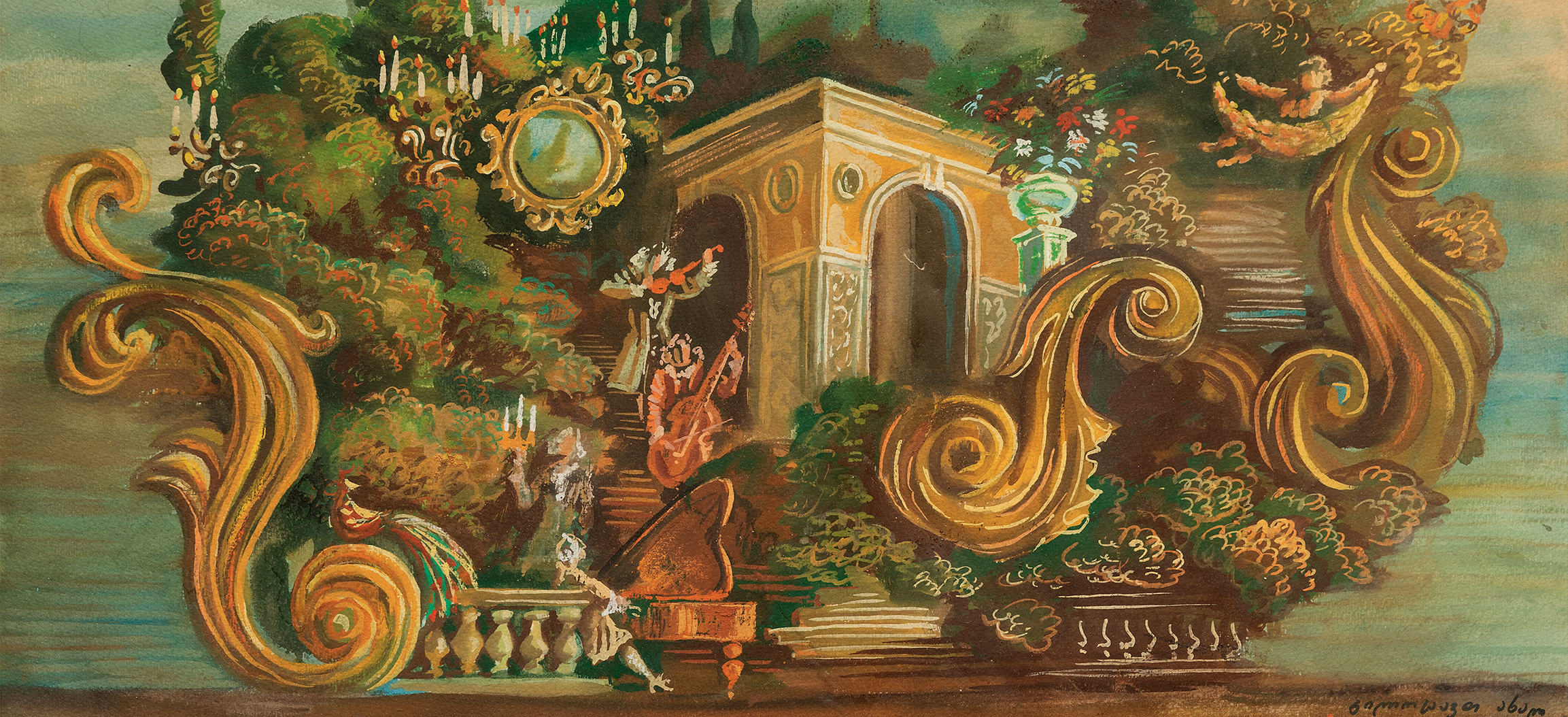
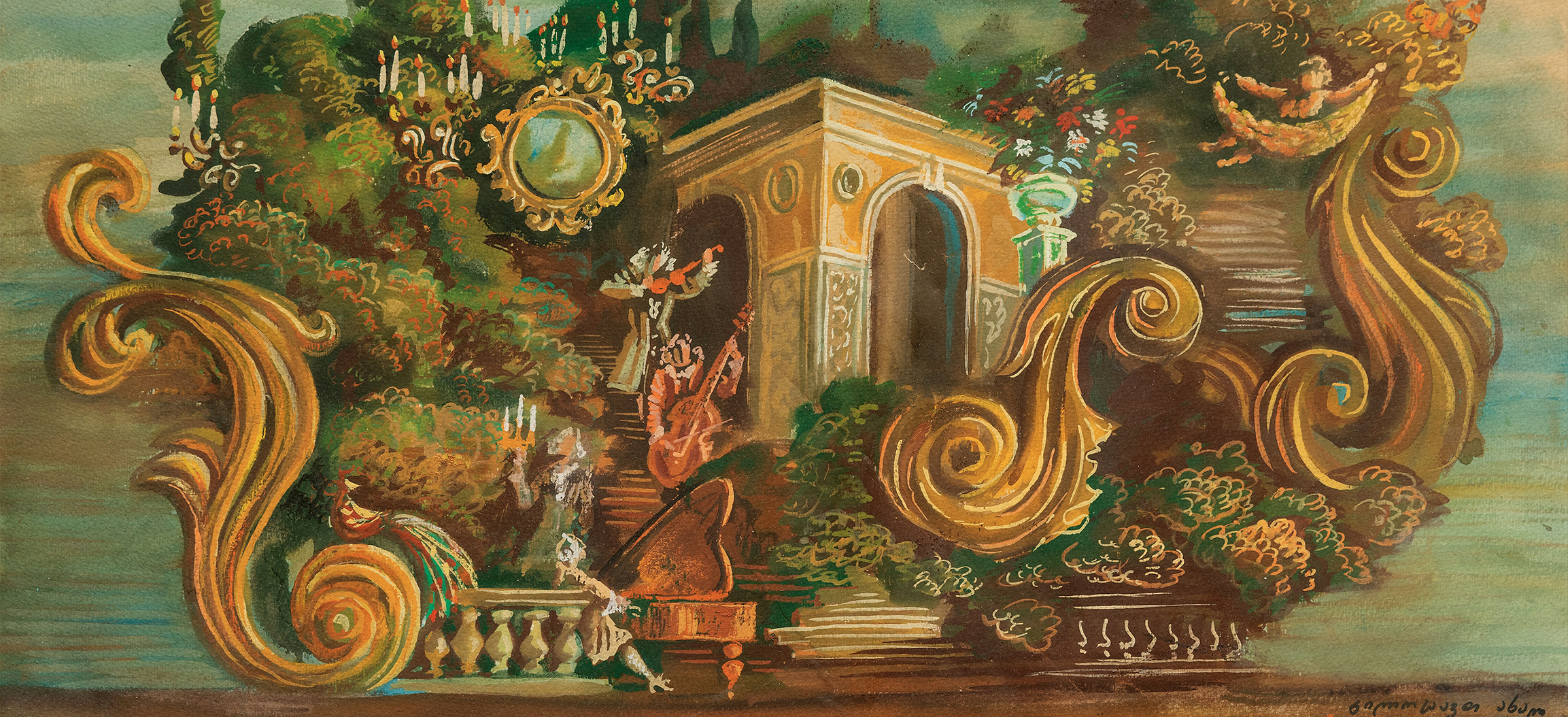
Nikoloz (Koka) Ignatov (1937–2002) was the key figure in Georgian art and culture during the 1960s -1980s. His first well-known work was the 1965 production of the play ‘The Wisdom and Lies’ at the Rustaveli Theater, which was directed by Nana Khatiskatsi and Tengiz Maghalashvili and was based on the fables of Sulkhan Saba Orbeliani. With its vibrant colors and creative expressiveness, the artist's background panel for this performance, which depicted a fairy-tale metaphor of the Georgian terrain, prompted audience applause as soon as the curtain opened.

Nikoloz (Koka) Ignatov. Sulkhan-Saba Orbeliani, The Wisdom and Lies, Sh. Rustaveli State Academic Theatre, sketch of a back panel for the performance, 1965, gouache on cardboard, 119 x 165, property of the artist’s family
This panel, like Ignatov's painting in general, is distinguished by multiple plots. Numerous narratives are presented, with a primary emphasis on fairy tale and allegorical themes, all expertly integrated into a cohesive composition. There is a conditional relationship between the scale ratio of the figures, which includes humans and everyday objects, the sea and the sky, lakes and rivers. It seems to be a Georgian landscape, seen from the clouds.
Ignatov was invited to decorate the expansive restaurant hall of the newly constructed architectural complex in Bichvinta two years later. The artist in this instance expanded the panel he had designed for the theater stage to a grand scale, and applied it to the surface of a large wall. Ignatov's name gained widespread recognition beyond Georgia as a result of this remarkable work.
Koka Ignatov was educated in a variety of artistic disciplines. He enrolled in the Department of Graphics at the Tbilisi Academy of Arts in 1956, and moved to the Department of Theater and Decorative Arts in his third year. In 1962, he received his diploma. It is not surprising that, in parallel with scenography and monumental painting, Koka Ignatov also worked fruitfully in the field of graphics. He created illustrations for several children's books, showcasing the breadth and diversity of his work. However, in every instance, his style consistently reflected his unique vision. Ignatov's artistic approach, whether in painting or graphic design, is distinguished by sharp attention to detail, a structured, architectural sense of composition, and a vibrant and decorative use of color. Another defining feature of his work is a carnival-like approach to the generalization of time and space, rich in metaphor, and with a wide-ranging perception of reality.
_Ignatov._Feast._Mixed_media_on_paper._48_x_36_cm._1979._ATINATI_Private_Collection__Large.jpeg)
Nikoloz (Koka) Ignatov. Feast, 1979, mixed media on paper, 48 x 36, ATINATI Private Collection
_Ignatov_“Mozart._Trivia”_stage_design_Mixed_media_on_paper_51_x_73_cm_1984._ATINATI_Private_Collection_Large.jpeg)
Nikoloz (Koka) Ignatov. Wolfgang Amadeus Mozart, Knick-Knackery, 1984, Z. Paliashvili Opera and Ballet Theatre, a sketch of decoration, gouache on cardboard, 55 x 77, ATINATI Private Collection
In 1971, due to his fame, Koka Ignatov was invited to paint the dining hall of the Tbilisi City Council on Mtatsminda, which is housed in the upper pavilion of the funicular. He presented a large piece titled ‘Longing for Pirosmani.’ We see a panoramic view of the city from above, with its ups and downs, balconied buildings, musicians, spread tables, phaetons, and so on. This is a nostalgic reflection of the old city, with its unique life and atmosphere, where the artist (Pirosmani) stands creating his iconic ‘Girl with a Balloon.’ The top building of the funicular was abandoned and plundered in the 1990s. While the central part of the impressive panel was cut out and stolen by unknown individuals, it was repaired at the beginning of the twenty-first century, and now again adorns the restaurant hall.

Nikoloz (Koka) Ignatov. Longing for Pirosmani, a sketch for the wall-painting, 1971, oil on cardboard, 39 x 119, private collection
After the “perestroika,” Koka Ignatov left the country, and spent some time in the USA and France. He continued to stay involved in the art world in both countries. However, his paintings from this period are less recognized. He occasionally exhibited his paintings in private galleries, and painted for his own enjoyment. One of the key motifs that emerged in his later years was linked to the seashore, particularly to the impressions he had brought from Georgia.

Nikoloz (Koka) Ignatov. Facade – Abstraction, 1970s, mixed media on paper, 37 x 48, ATINATI Private Collection
In Gonio, by the sea, Koka Ignatov had a cottage where he frequently worked in his workshop. This house, now a museum, displays the stones that the artist collected on the seashore and painted in various hues.
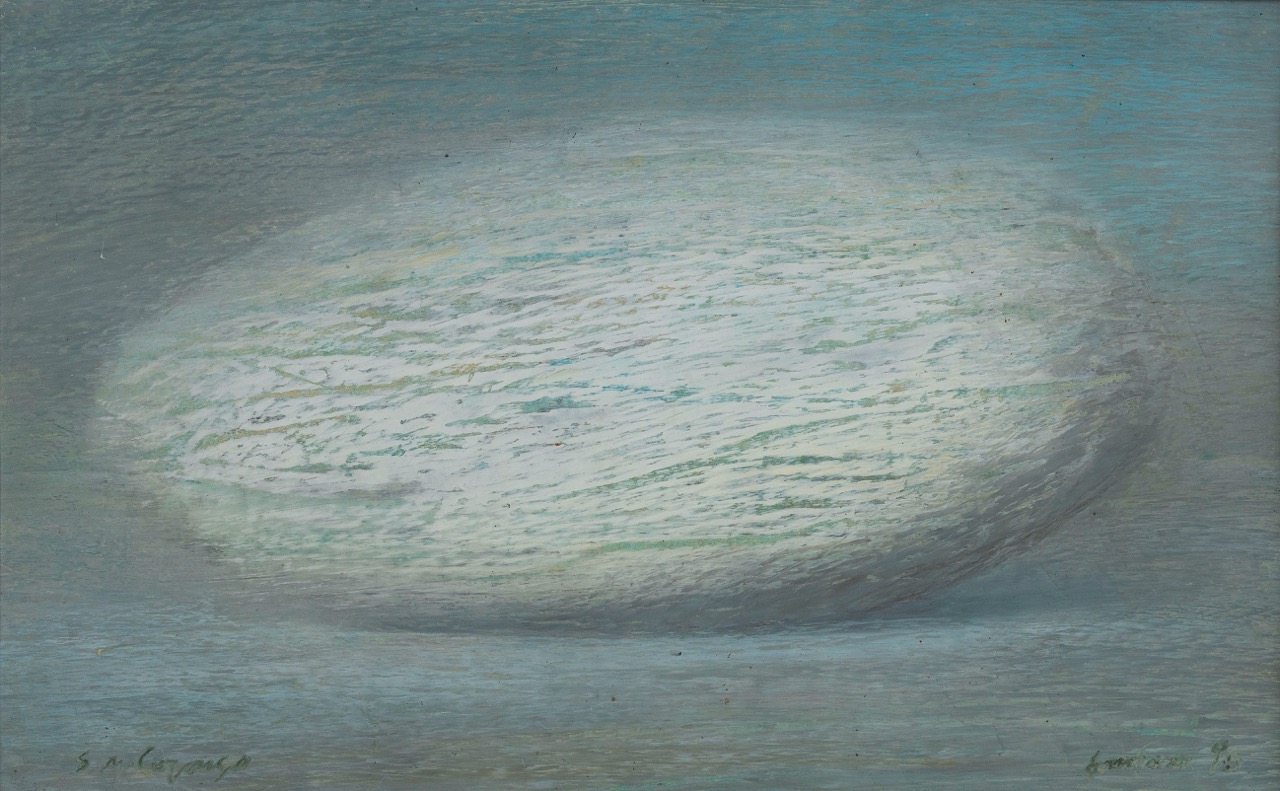
Nikoloz (Koka) Ignatov. A Stone, 1993, pastel on paper, 28 x 46,5, ATINATI Private Collection
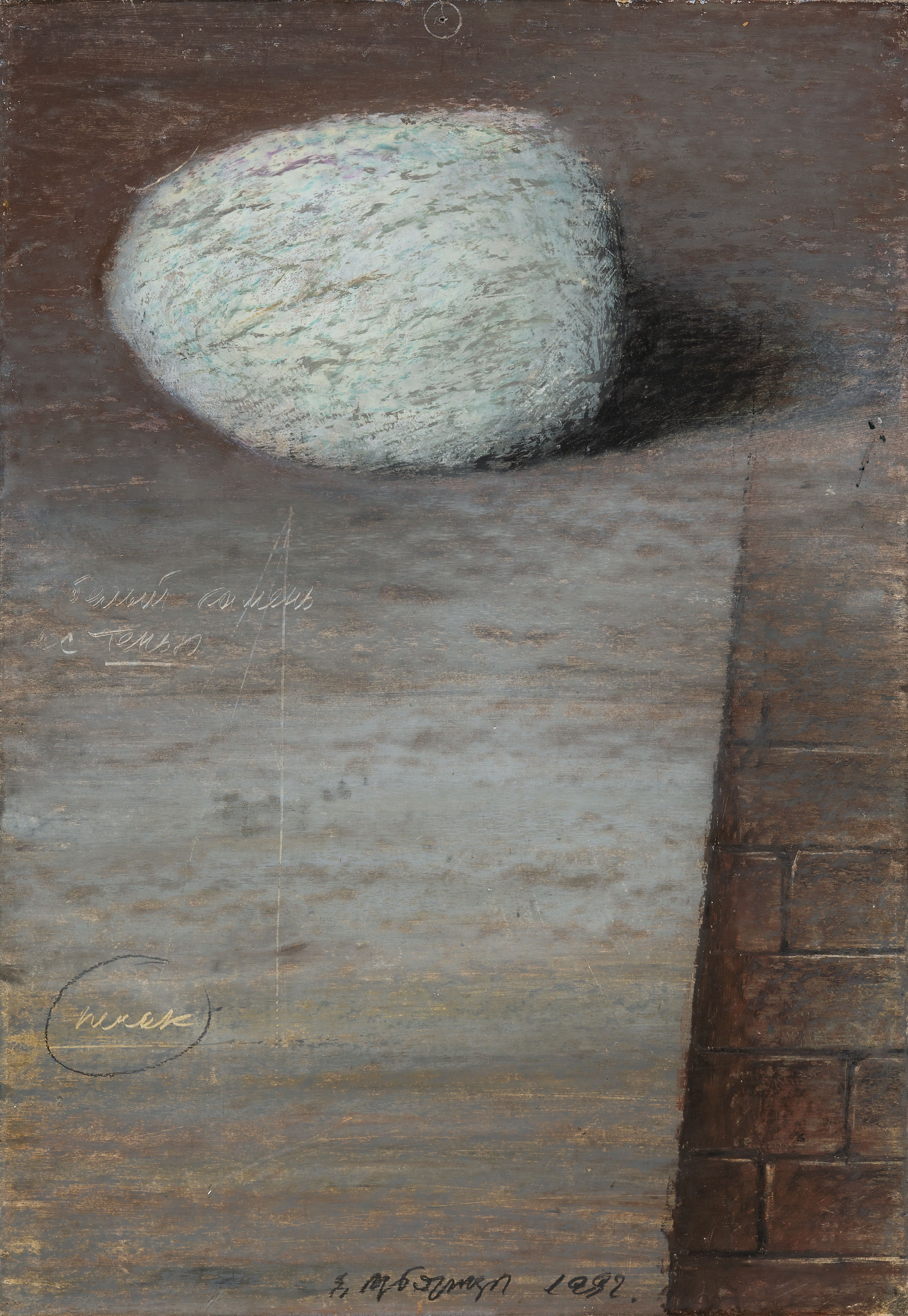
Nikoloz (Koka) Ignatov. A white stone with shadow, 1992, mixed media on cardboard, 57,7 x 40, ATINATI Private Collection
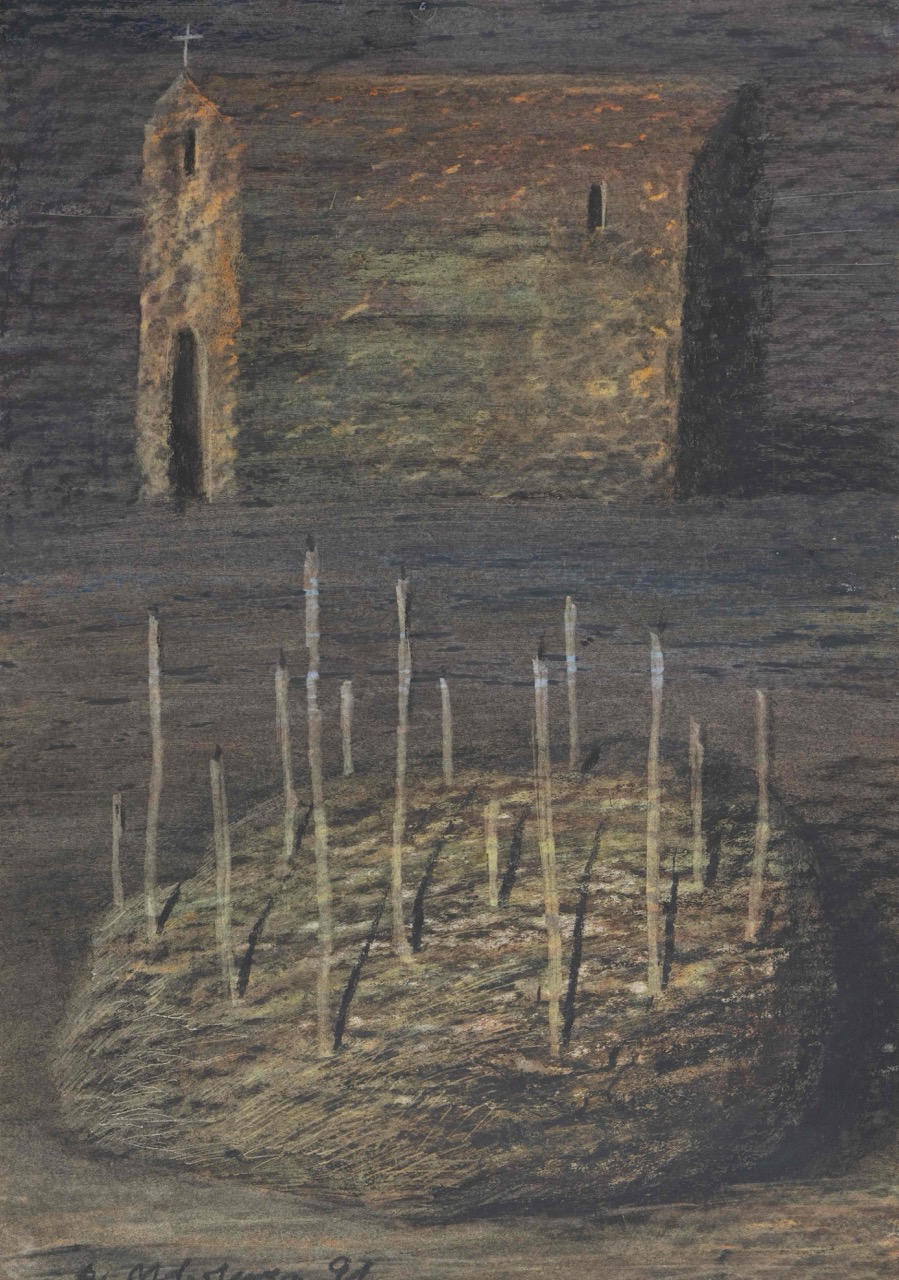
Nikoloz (Koka) Ignatov. From the series “Stones,” 1990s, 56 x 38.5, pastel on cardboard, ATINATI Private Collection
The artist also created still-lifes from rusty items found on the beach, washed up by the sea. It seems that he studied those small stones, which inspired him to explore philosophical ideas. Ignatov even recorded the sizes of the pebbles in small illustrations within his notebooks. In his paintings, these seemingly insignificant objects are transformed into monumental forms, gaining new, meaningful, and artistic significance. The stone takes center stage in this scene. Natural, small objects, magnified on the canvas, amplify the viewer's contemplation of the dimensions of time and space, as well as the subject's relationship with the outside world.

Nikoloz (Koka) Ignatov. From the series “Stones; Stone and Tree,” 1991, oil on canvas, 196.5 x 99, ATINATI Private Collection
Nikoloz (Koka) Ignatov. Stones, 1991, oil on canvas, 196 x 103, ATINATI Private Collection
Nikoloz (Koka) Ignatov. From the series “Stones; The Church with Stone,” 1999, oil on canvas,196.5 x 99.5, ATINATI Private Collection
Koka Ignatov painted in all genres, and mastered almost all means of graphic art and painting. Due to his exceptional sense of form, he maintained his status as a monumentalist, regardless of whether he was producing large-scale wall paintings or tiny sketches. From the outset of his career, he combined numerous narratives into grandiose compositions, which served as a platform for him to communicate with a wider audience, and it was no accident that these works were intended for public spaces. Yet, in contrast, his later works appear to be directed toward a single individual who stands in front of the work, either confiding in him, or providing him with an opportunity for introspection. In the first case, everything is clear, and the story unfolds before the viewer like a poster, whereas in the second situation, the artist immerses the viewer in the world of thought.
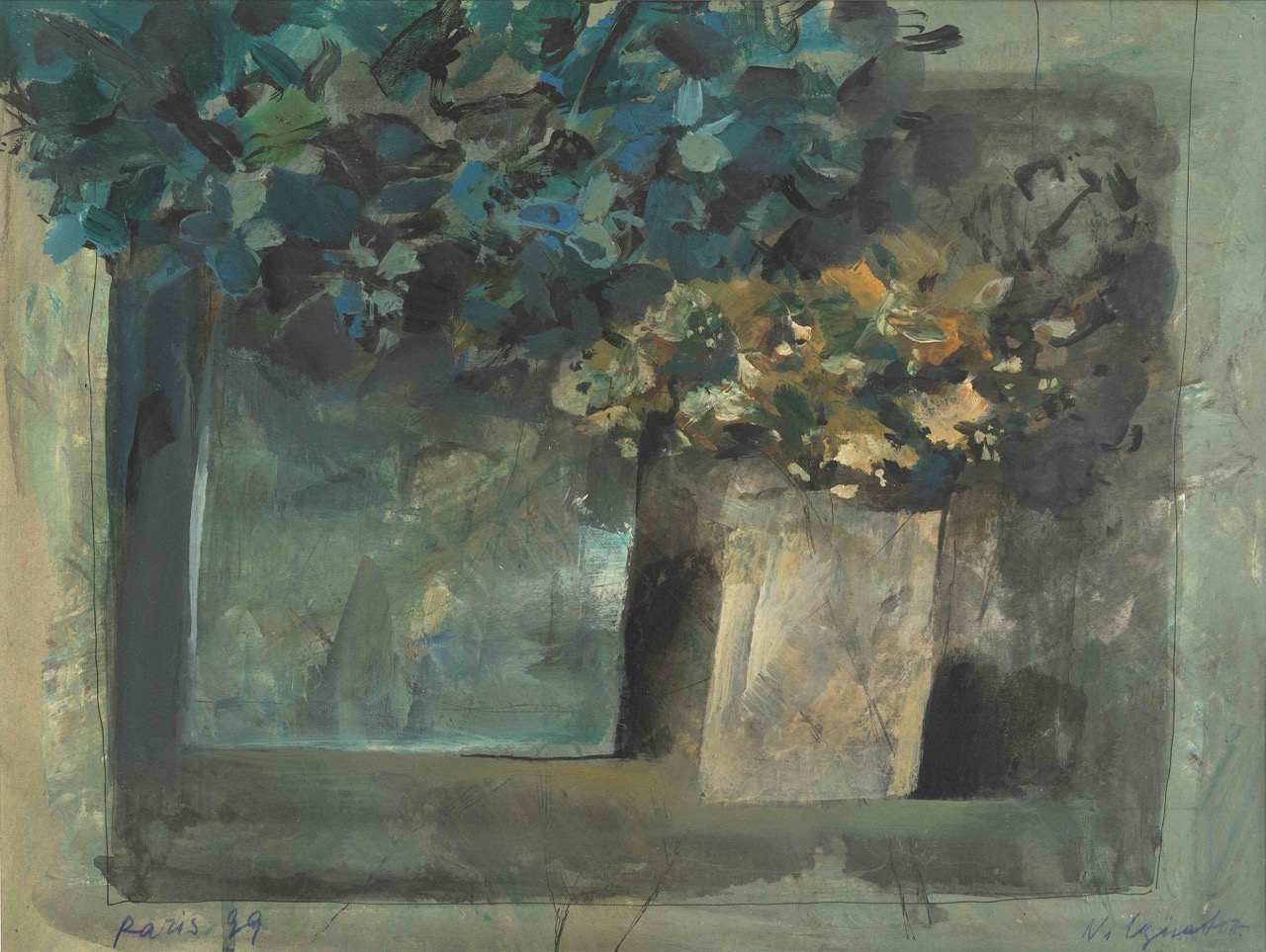
Nikoloz (Koka) Ignatov. Flowers, 1999, mixed media on paper, 37 x 48, ATINATI Private Collection
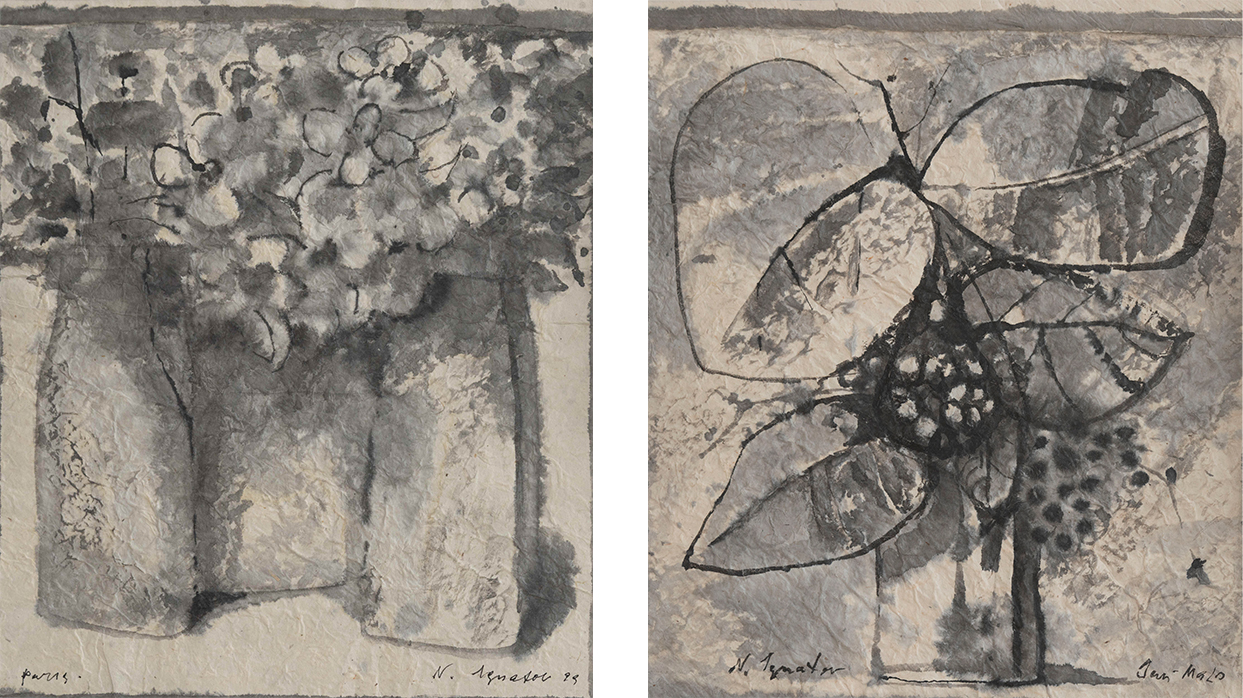
Nikoloz (Koka) Ignatov. Flowers, 1999, mixed media on textured paper, 33 x 28,7, ATINATI Private Collection
Nikoloz (Koka) Ignatov. Flowers, 1999, mixed media on textured paper, 33,5 x 28,5, ATINATI Private Collection
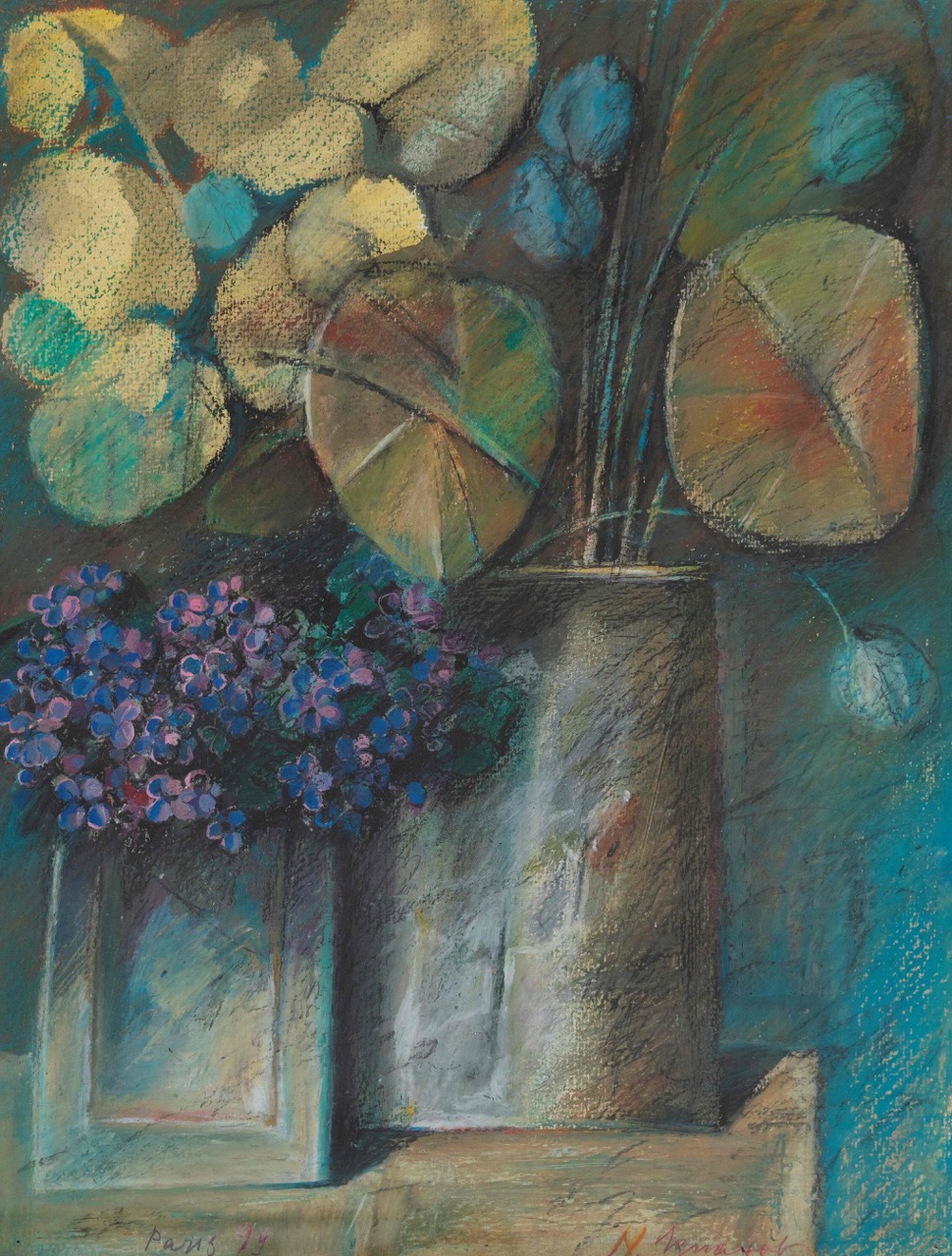
Nikoloz (Koka) Ignatov. Flowers, 1999, mixed media on paper, 37 x 48, ATINATI Private Collection
In addition to the aforementioned works, Koka Iganatov created a variety of other monumental paintings. Among them, the composition in the lobby of the Shota Rustaveli Theater is noteworthy, as a work that captures the full history of the theater.
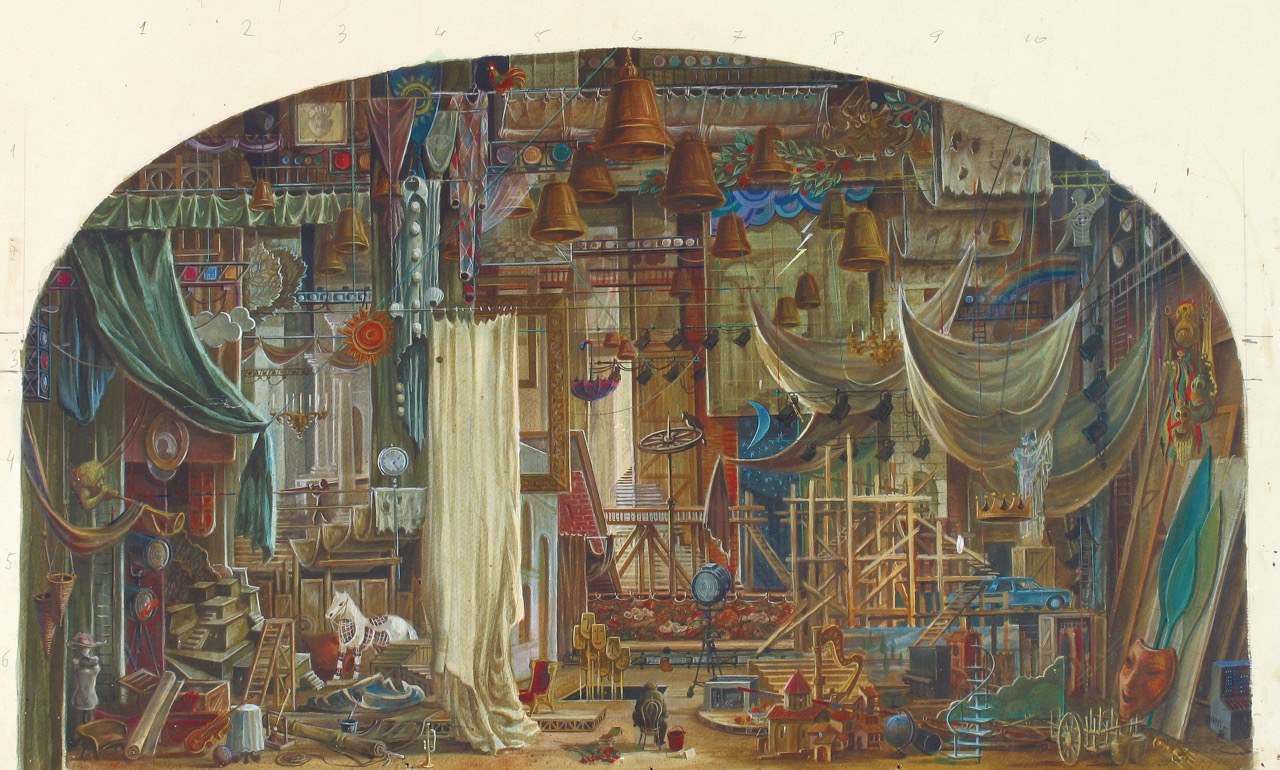
Nikoloz (Koka) Ignatov. A Sketch of the wall painting at the foyer of the Sh. Rustaveli Theater, 1987-88, gouache on cardboard, 55 x 92, private collection
Koka Ignatov passed away in Tbilisi in 2002. His paintings can be found displayed in many public buildings, museums, galleries, private collections, and libraries in the city to this day.